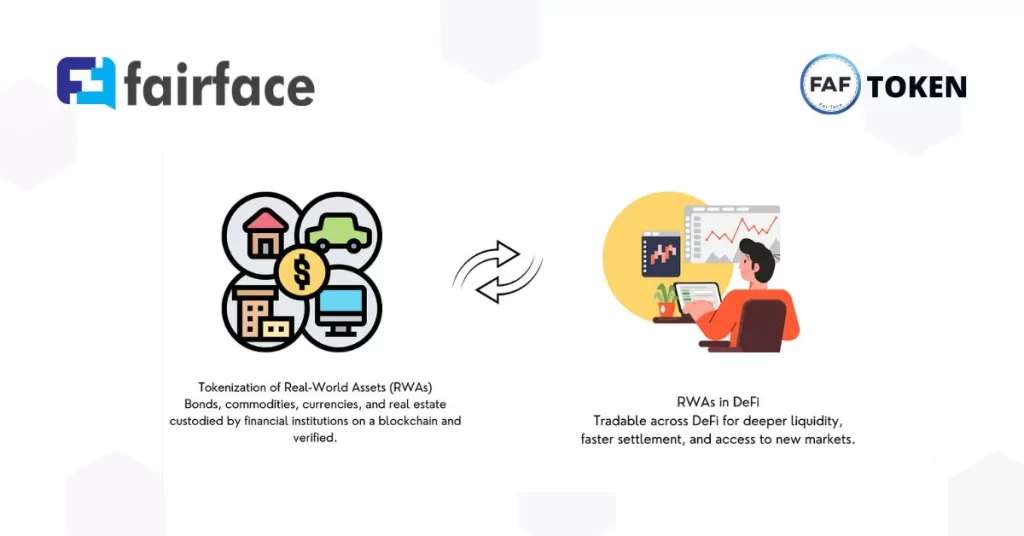The decentralized finance (DeFi) space has introduced a wave of innovation, reshaping the financial landscape as we know it. One of the most exciting developments in DeFi is the emergence of Tokenized Real-World Assets (RWA). In this blog post, we will explore what RWA are, how they work, and why they hold immense significance in the world of decentralized finance.
What Are Tokenized Real-World Assets (RWA)?
Tokenized Real-World Assets (RWA) are digital representations of tangible, real-world assets such as real estate, stocks, commodities, and more, that are recorded on a blockchain. These tokens represent ownership or rights to a portion of the underlying physical asset.
How Do Tokenized Real-World Assets Work?
The process of tokenizing real-world assets typically involves the following steps:
- Asset Verification: Before tokenization, the asset’s legitimacy and ownership are verified. This process often includes legal documentation and due diligence.
- Legal Framework: Smart contracts are created, outlining the ownership rights and responsibilities of token holders. These contracts are designed to comply with local regulations.
- Token Creation: Tokens representing ownership rights to the real-world asset are minted and recorded on a blockchain. Each token typically corresponds to a fraction of the physical asset.
- Trading and Ownership Transfer: These tokens can be traded or transferred among investors in a transparent and secure manner. Ownership of the physical asset can change hands without the need for complex paperwork.
- Revenue Sharing: Depending on the asset, token holders may receive dividends, rental income, or other forms of revenue generated by the underlying asset.
Why Do Tokenized Real-World Assets Matter in DeFi?
- Increased Liquidity: RWA can be traded 24/7 on decentralized exchanges (DEXs), providing liquidity to traditionally illiquid assets. This makes it easier for investors to buy and sell ownership stakes in real-world assets.
- Diversification: Tokenization allows investors to diversify their portfolios by gaining exposure to a wide range of assets, including those that were previously inaccessible.
- Fractional Ownership: RWA tokens enable fractional ownership, making high-value assets accessible to a broader range of investors. This promotes financial inclusivity.
- Efficiency: The use of blockchain technology reduces administrative overhead, streamlines transactions, and minimizes the need for intermediaries, making the entire process more efficient.
- Global Accessibility: Tokenized assets can be accessed and traded by investors around the world, fostering global financial inclusion.
- Transparency and Security: Transactions and ownership of RWA tokens are recorded on a blockchain, ensuring transparency and security. The blockchain also provides a transparent record of the asset’s history.
- Interoperability: Tokenized assets can be utilized within DeFi protocols for lending, borrowing, or collateral, further expanding their use cases.
Examples of Tokenized Real-World Assets:
- Real Estate Tokens: Investors can hold tokens representing fractions of real estate properties, gaining rental income and potential property appreciation.
- Stock Tokens: Tokens can represent ownership in traditional company stocks, allowing for fractional ownership and dividends.
- Commodity Tokens: Precious metals, such as gold or silver, can be tokenized, giving investors exposure to these assets.
Conclusion:
Tokenized Real-World Assets (RWA) are transforming the way we view and interact with traditional assets. They unlock new possibilities for liquidity, diversification, and accessibility while maintaining transparency and security. As DeFi continues to evolve, RWA will play a pivotal role in broadening the horizons of decentralized finance, making it a truly global and inclusive financial ecosystem. Stay tuned for further developments as RWA reshape the future of finance.

